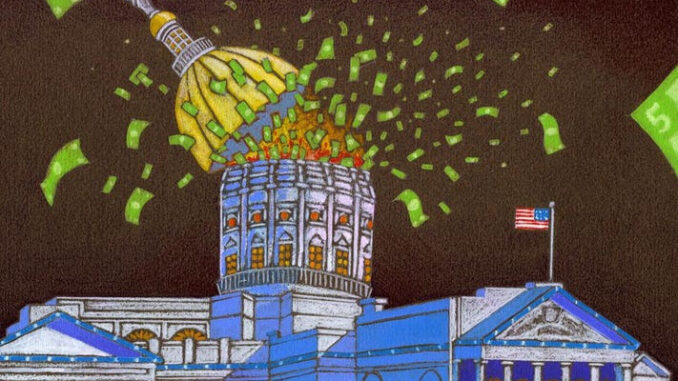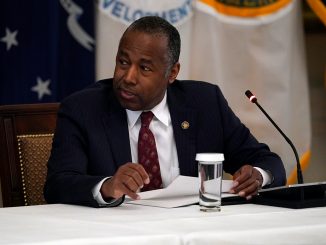
The U.S. national debt is rising at a pace never seen in the history of America. With a current debt exceeding $28 trillion – an increase of nearly $5 trillion in 14 short months, Washington is now debating an infrastructure bill with a price tag close to $2 trillion. Even without this additional spending, the national debt will approach $89 trillion by 2029 according to USDebtClock.org.
This would put the country’s debt-to-GDP ratio at 277%, surpassing Japan’s current 272% debt-to-GDP ratio. The good news is that the U.S. economy grew by 6.4% in the first quarter of the year. The bad news is that, after we return to normal, future economic growth will not be as robust, primarily due to the burgeoning debt. Yes, America is losing, or perhaps already has lost, control of its public spending. But it hasn’t always been that way.
Looking at data since 1901, federal government receipts and expenditures were mostly in line until the early 1970s. Sure, we had a deficit at times, including during WWI, the Great Depression, and WWII. Even then, Washington had some measure of control over its spending as the country was still under the gold standard. However, when Nixon abandoned the gold standard in 1971, the shackles were removed and Congress was free to spend, or rather overspend.
The following chart highlights the nation’s surplus/deficit from June 30, 1901 to September 30, 2020. The vertical grey shaded areas indicate recessions/depressions.
In more recent times, Washington’s propensity to overspend has been unparalleled. When the financial crisis hit in late 2007, Congress passed a series of spending bills, known as quantitative easing, to help the country emerge from the Great Recession. Back then, expenditures were about 67% greater than receipts. The Covid-19 pandemic has ushered in a new wave of spending with expenditures surpassing receipts by nearly 92%. The following chart contains the data.
ALSO READ: Fleeing Afghanistan minister now delivers pizza in Germany
Simply put, we are leveraging our future to stimulate today’s economy. According to a 2011 research paper from the Bank of International Settlements – a bank and research hub owned by 63 central banks from around the world, when government debt-to-GDP exceeds 85%, future economic growth is reduced. With a current debt-to-GDP ratio of 127%, which is expected to rise to 277% by 2029, future economic growth will not be as robust as it has been in the past. The exception to this will be during an economic rebound following a recession, which is typical.
Now we are facing another round of Congressional spending with the new infrastructure bill. Do we need to address our infrastructure? Yes. Is this the right time to add another $2 trillion in spending? Absolutely not. You see, the economy is already growing well. No additional spending is required at this time. Why is Washington pushing so hard to pass this bill now? Because Democrats have a majority in Washington, at least until the November 2022 election. Therefore, the timing of this new bill is not predicated on the need of the nation, but rather the political composition in Washington. As Rahm Emanuel said during the Great Recession, “You never let a serious crisis go to waste. And what I mean by that it’s an opportunity to do things you think you could not do before.”
The battle between progressives and conservatives is intensifying and the progressives are holding court. The result of this egregious overspending is a national debt that is spiraling out of control. More to the point, our elected officials are spending without regard for our future. Until “we the people” decide to hold them accountable, we should expect more of the same.




